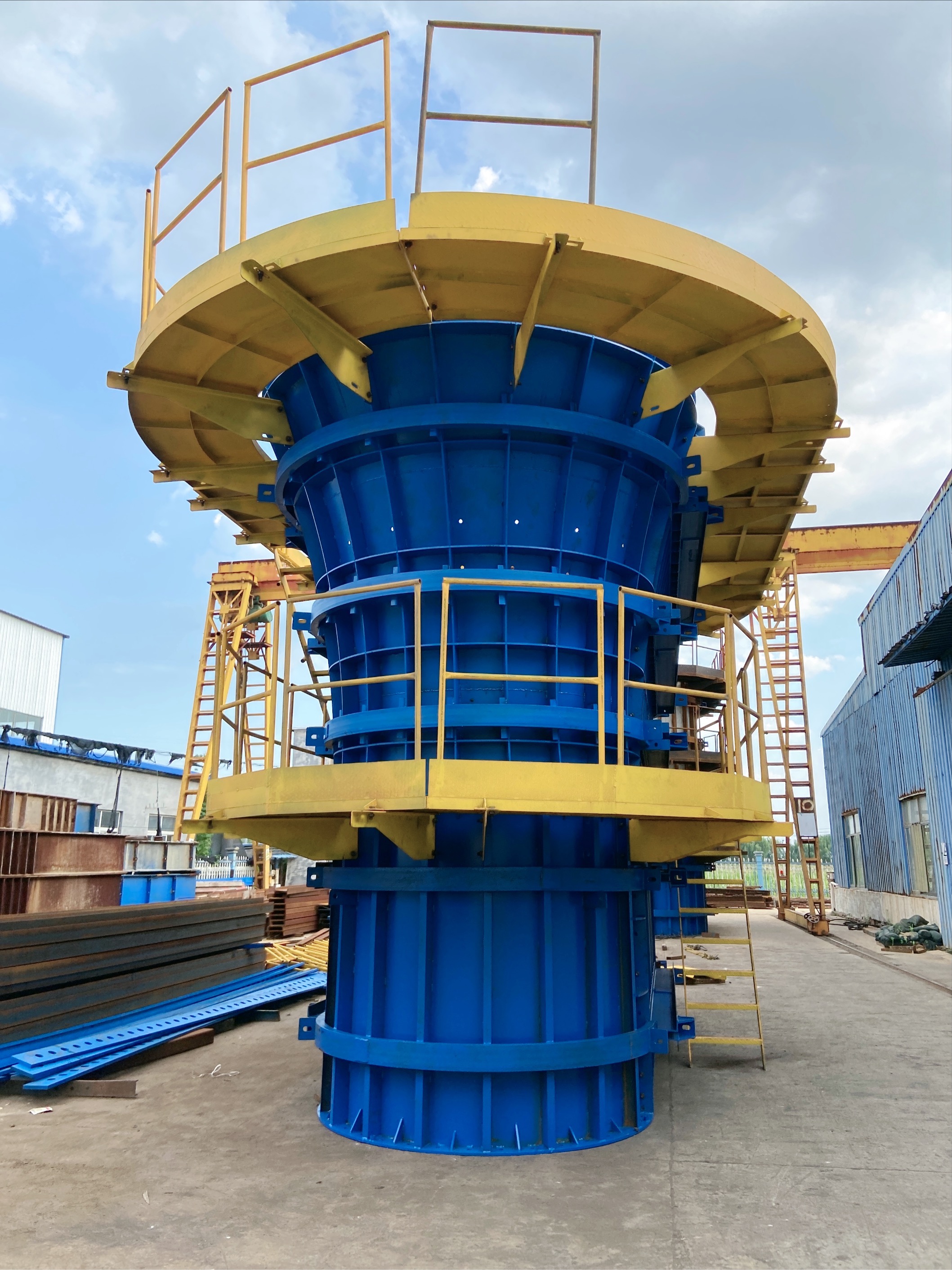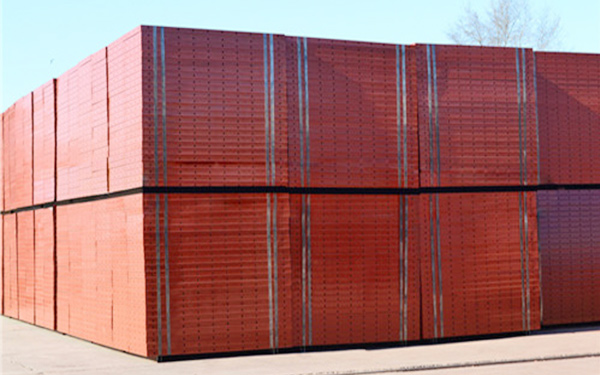Current position:
Home
News home
Industry News
Composite steel formwork manufacturer: What are the advantages and disadvantages of steel formwork compared to wooden formwork and aluminum formwork?
Composite steel formwork manufacturer: What are the advantages and disadvantages of steel formwork compared to wooden formwork and aluminum formwork?
source:Shandong Tianhong Heavy Industry Co., Ltd
Abstract:
Steel formwork, wooden formwork, and aluminum formwork are three commonly used formwork materials in construction engineering, each with differences in cost, performance, construction efficiency, and applicability. Here is a comparison of their advantages and disadvantages:
1、 Advantages and disadvantages of steel formwork
advantage:
High strength and strong bearing capacity
Steel formwork has high rigidity, excellent compressive and bending resistance, and is suitable for large concrete structures (such as bridges and high-rise buildings) and high load scenarios.
High reuse rate
Steel formwork has a long service life and can be reused hundreds or even thousands of times, with low long-term costs.
Accurate size and smooth surface
The surface of the formed concrete is smooth, with high dimensional accuracy, reducing the need for later repair work.
Fire resistant and corrosion-resistant
Good stability and low maintenance cost in high temperature or humid environments.
Good environmental friendliness
Recyclable and reusable, reducing construction waste.
Disadvantages:
High initial cost
Steel prices are high and require significant upfront investment, making it suitable for large-scale repetitive projects.
Heavy weight and difficult handling
Mechanical assistance is required for installation and disassembly, making manual operation inconvenient.
Poor flexibility
Difficult to modify after finalization, not suitable for complex irregular structures.
Easy to rust (requires maintenance)
Long term exposure to humid environments requires rust prevention treatment, which increases maintenance costs.
2、 Advantages and disadvantages of wooden formwork
advantage:
low cost
Low wood prices make it suitable for small projects or temporary works with limited budgets.
Flexible processing
Easy to cut and nail, can quickly adapt to complex shapes and curved structures.
Lightweight and easy to operate
Manual handling and installation are convenient, without the need for large machinery.
Good insulation performance
Wood is non-conductive and suitable for certain special construction environments.
Disadvantages:
Poor durability
Easy to get damp, deform or crack, with few repeated uses (usually only 5-10 times).
Low surface quality
More polishing treatment may be required after the concrete is formed.
High resource consumption
Dependence on wood, poor environmental friendliness (requiring deforestation).
Poor fire resistance
Wood is flammable and poses a safety hazard.
3、 Advantages and disadvantages of aluminum formwork
advantage:
Lightweight
Aluminum has low density and weighs only one-third of steel formwork, making manual handling convenient.
High construction efficiency
Modular design, quick assembly, suitable for standardized high-rise buildings (such as residential buildings).
Good surface quality
The concrete is formed smoothly and can achieve a clear water effect.
Corrosion resistant and maintenance free
Aluminum has strong oxidation resistance and a long service life (about 300 times or more).
Environmentally friendly and recyclable
Aluminum can be 100% recycled, in line with the trend of green building.
Disadvantages:
High initial cost
The unit price of aluminum formwork is higher than that of steel formwork, making it suitable for long-term turnover projects.
Weak impact resistance
Aluminum has low hardness and is prone to deformation upon collision, requiring careful maintenance.
Limited flexibility
After being finalized, it is difficult to modify, and the irregular structure needs to be customized, which increases the cost.
Conductivity risk
Aluminum material is conductive, and attention should be paid to construction safety.
4、 Comprehensive comparison and applicable scenarios
Type applicable scenario not applicable scenario
Steel formwork for large bridges, factories, repetitive high-rise buildings, small projects, irregular structures, and projects with limited budgets
Projects with low rise residential buildings using wooden formwork, complex shapes, high-precision short-term engineering, and high reuse requirements
Standardization of aluminum formwork for high-rise residential buildings, non-standard design for rapid construction projects, and small projects with limited funds
Summary suggestion:
Due to limited budget and short-term projects, wooden formwork is preferred.
Large repetitive structures: Steel formwork offers higher cost-effectiveness.
Standardized high-rise buildings: Aluminum formwork has the best efficiency and lower long-term costs.
Based on project requirements such as schedule, budget, and structural complexity, a comprehensive selection can be made, and different templates can be combined and used if necessary.
advantage:
High strength and strong bearing capacity
Steel formwork has high rigidity, excellent compressive and bending resistance, and is suitable for large concrete structures (such as bridges and high-rise buildings) and high load scenarios.
High reuse rate
Steel formwork has a long service life and can be reused hundreds or even thousands of times, with low long-term costs.
Accurate size and smooth surface
The surface of the formed concrete is smooth, with high dimensional accuracy, reducing the need for later repair work.
Fire resistant and corrosion-resistant
Good stability and low maintenance cost in high temperature or humid environments.
Good environmental friendliness
Recyclable and reusable, reducing construction waste.
Disadvantages:
High initial cost
Steel prices are high and require significant upfront investment, making it suitable for large-scale repetitive projects.
Heavy weight and difficult handling
Mechanical assistance is required for installation and disassembly, making manual operation inconvenient.
Poor flexibility
Difficult to modify after finalization, not suitable for complex irregular structures.
Easy to rust (requires maintenance)
Long term exposure to humid environments requires rust prevention treatment, which increases maintenance costs.
2、 Advantages and disadvantages of wooden formwork
advantage:
low cost
Low wood prices make it suitable for small projects or temporary works with limited budgets.
Flexible processing
Easy to cut and nail, can quickly adapt to complex shapes and curved structures.
Lightweight and easy to operate
Manual handling and installation are convenient, without the need for large machinery.
Good insulation performance
Wood is non-conductive and suitable for certain special construction environments.
Disadvantages:
Poor durability
Easy to get damp, deform or crack, with few repeated uses (usually only 5-10 times).
Low surface quality
More polishing treatment may be required after the concrete is formed.
High resource consumption
Dependence on wood, poor environmental friendliness (requiring deforestation).
Poor fire resistance
Wood is flammable and poses a safety hazard.
3、 Advantages and disadvantages of aluminum formwork
advantage:
Lightweight
Aluminum has low density and weighs only one-third of steel formwork, making manual handling convenient.
High construction efficiency
Modular design, quick assembly, suitable for standardized high-rise buildings (such as residential buildings).
Good surface quality
The concrete is formed smoothly and can achieve a clear water effect.
Corrosion resistant and maintenance free
Aluminum has strong oxidation resistance and a long service life (about 300 times or more).
Environmentally friendly and recyclable
Aluminum can be 100% recycled, in line with the trend of green building.
Disadvantages:
High initial cost
The unit price of aluminum formwork is higher than that of steel formwork, making it suitable for long-term turnover projects.
Weak impact resistance
Aluminum has low hardness and is prone to deformation upon collision, requiring careful maintenance.
Limited flexibility
After being finalized, it is difficult to modify, and the irregular structure needs to be customized, which increases the cost.
Conductivity risk
Aluminum material is conductive, and attention should be paid to construction safety.
4、 Comprehensive comparison and applicable scenarios
Type applicable scenario not applicable scenario
Steel formwork for large bridges, factories, repetitive high-rise buildings, small projects, irregular structures, and projects with limited budgets
Projects with low rise residential buildings using wooden formwork, complex shapes, high-precision short-term engineering, and high reuse requirements
Standardization of aluminum formwork for high-rise residential buildings, non-standard design for rapid construction projects, and small projects with limited funds
Summary suggestion:
Due to limited budget and short-term projects, wooden formwork is preferred.
Large repetitive structures: Steel formwork offers higher cost-effectiveness.
Standardized high-rise buildings: Aluminum formwork has the best efficiency and lower long-term costs.
Based on project requirements such as schedule, budget, and structural complexity, a comprehensive selection can be made, and different templates can be combined and used if necessary.
Disclaimer: The content provided on this website is for reference only (some information is sourced from the internet). The publication of content information is for the purpose of transmission and does not represent the views of this website. If the content involves copyright issues, please contact the website editor in a timely manner, and we will take appropriate measures to avoid unnecessary losses for both parties.
Related article
- Pulling out Mountains and Rivers for Win Win - Jining Tianli Employees Celebrate National Day Holiday with Tug of War Competition
- How to calculate the bearing capacity of steel formwork for rental manufacturers of construction steel formwork?
- Steel template manufacturers, wholesalers, and suppliers: What should be done if there are scratches on the surface of the template?
- Bridge steel formwork processing: How to control the deformation of steel formwork?
- Customization of steel formwork specifications: What are the installation steps for steel formwork?
- Large scale steel formwork manufacturers: What are the advantages and disadvantages of galvanizing treatment for steel formwork?
- Processing custom steel formwork factory: About rust prevention treatment methods and precautions for steel formwork
- Customized manufacturer of composite steel formwork: How to prevent and deal with steel formwork that is not allowed to be reserved or embedded?
- Customized rental of construction steel formwork: How to ensure the installation accuracy of steel formwork?
- Steel formwork manufacturer: How long is the lifespan of stainless steel formwork?
- Customization of Steel Template Specifications: What are the Common Types of Defects in Steel Templates?
- Composite bridge steel formwork processing manufacturer: How to check the dimensional accuracy after steel formwork correction?
Hot article

- T梁模版
- Pulling out Mountains and Rivers for Win Win - Jining Tianli Employees Celebrate National Day Holiday with Tug of War Competition
- 力“拔”山兮,“河”作共赢——济宁天力员工欢度国庆假期之拔河比赛
- Pulling out Mountains and Rivers for Win Win - Jining Tianli Employees Celebrate National Day Holiday with Tug of War Competition
- Pulling out Mountains and Rivers for Win Win - Jining Tianli Employees Celebrate National Day Holiday with Tug of War Competition
- Pulling out Mountains and Rivers for Win Win - Jining Tianli Employees Celebrate National Day Holiday with Tug of War Competition
- Pulling out Mountains and Rivers for Win Win - Jining Tianli Employees Celebrate National Day Holiday with Tug of War Competition
Recommended article

Customized rental of construction steel formwork: How to prevent and deal with loose joints in steel formwork?

Customized rental of steel formwork: What are the dimensions, specifications, and models of steel formwork?
- Customized rental of construction steel formwork: How to prevent and deal with loose joints in steel formwork?
- Customized rental of steel formwork: What are the dimensions, specifications, and models of steel formwork?
- Steel formwork manufacturer supply specifications: What are the applicable fields for steel formwork
- 力“拔”山兮,“河”作共赢——济宁天力员工欢度国庆假期之拔河比赛
- Pulling out Mountains and Rivers for Win Win - Jining Tianli Employees Celebrate National Day Holiday with Tug of War Competition
- Pulling out Mountains and Rivers for Win Win - Jining Tianli Employees Celebrate National Day Holiday with Tug of War Competition
- Pulling out Mountains and Rivers for Win Win - Jining Tianli Employees Celebrate National Day Holiday with Tug of War Competition
- Pulling out Mountains and Rivers for Win Win - Jining Tianli Employees Celebrate National Day Holiday with Tug of War Competition



